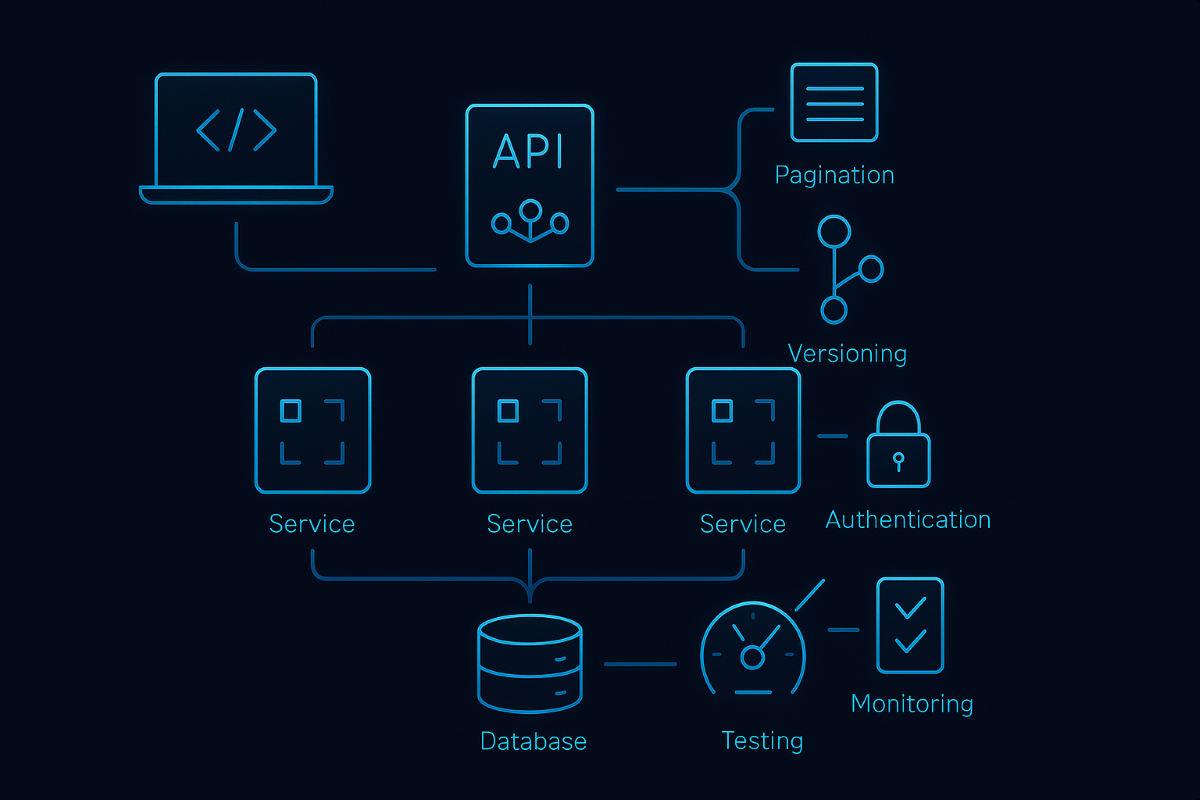Understanding API Design Principles
A critical look at essential guidelines for effective API design.
Core Principles of API Design
Effective API design is crucial for ensuring that software applications can communicate seamlessly. Key principles include consistency, simplicity, and usability. A well-designed API should have a predictable structure, making it easier for developers to understand and implement. This predictability fosters a better user experience, as developers can anticipate how different components of the API will behave. Read more.
Consistency in API design means that similar actions should be performed in similar ways. For instance, if a developer uses a specific method to retrieve data from one endpoint, they should expect a similar method to be used for another endpoint. This uniformity reduces the cognitive load on developers, allowing them to focus on building applications rather than deciphering how to interact with the API.
Simplicity is another cornerstone of effective API design. An API should expose only the necessary functionality, avoiding unnecessary complexity that can confuse users. By limiting the number of endpoints and parameters, developers can create a more straightforward interface that is easier to learn and use. This approach not only benefits the developers but also enhances the overall performance of the application.
Documentation and Usability
Comprehensive documentation is a cornerstone of good API design. It should provide clear instructions on how to use the API, including examples and potential error messages. This documentation not only aids developers in integrating the API but also serves as a reference point for troubleshooting. Usability extends beyond documentation; the API itself should be intuitive, minimizing the learning curve for new users.
Good documentation should cover various aspects of the API, including authentication methods, endpoint descriptions, and data formats. It is essential that the documentation is kept up to date with any changes to the API. When developers encounter discrepancies between the API’s functionality and its documentation, it can lead to frustration and decreased productivity.
Moreover, usability can be enhanced through the design of the API’s endpoints. RESTful APIs, for example, use standard HTTP methods (GET, POST, PUT, DELETE) to perform operations, making them more familiar to developers. This familiarity allows developers to leverage their existing knowledge of HTTP when working with APIs, further reducing the learning curve.
Versioning and Stability
Versioning is a critical aspect of API design that ensures stability and backward compatibility. As APIs evolve, it is essential to maintain previous versions to avoid breaking existing applications that rely on them. A well-structured versioning strategy allows developers to introduce new features and improvements without disrupting the user experience for those on older versions.
There are several approaches to API versioning, including using URL paths (e.g., /v1/resource) or request headers. Each method has its advantages and disadvantages, and the choice often depends on the specific use case and the preferences of the development team. Regardless of the method chosen, clear communication about version changes is vital to keep developers informed and prepared for transitions.
Security Considerations
Security is an integral part of API design that cannot be overlooked. APIs often expose sensitive data and functionality, making them potential targets for malicious actors. Implementing robust authentication and authorization mechanisms is essential to protect the API and its users.
Common practices include using OAuth for authorization, which allows users to grant third-party applications limited access to their resources without sharing their credentials. Additionally, employing HTTPS ensures that data transmitted between the client and server is encrypted, safeguarding it from interception.
Regular security audits and vulnerability assessments are also necessary to identify and mitigate potential risks. By proactively addressing security concerns, developers can build trust with their users and ensure the long-term viability of their APIs.
Bottom Line
Good API design is characterized by clear principles, thorough documentation, and a focus on usability, security, and stability, which together enhance the developer experience and foster successful integrations.
Further Reading
Further Reading
- HackerNews — Everything I know about good API design (ID: https://news.ycombinator.com/item?id=45006801)
Connect with the Author
Curious about the inspiration behind The Unmaking of America or want to follow the latest news and insights from J.T. Mercer? Dive deeper and stay connected through the links below—then explore Vera2 for sharp, timely reporting.
About the Author
Discover more about J.T. Mercer’s background, writing journey, and the real-world events that inspired The Unmaking of America. Learn what drives the storytelling and how this trilogy came to life.
[Learn more about J.T. Mercer]
NRP Dispatch Blog
Stay informed with the NRP Dispatch blog, where you’ll find author updates, behind-the-scenes commentary, and thought-provoking articles on current events, democracy, and the writing process.
[Read the NRP Dispatch]
Vera2 — News & Analysis
Looking for the latest reporting, explainers, and investigative pieces? Visit Vera2, North River Publications’ news and analysis hub. Vera2 covers politics, civil society, global affairs, courts, technology, and more—curated with context and built for readers who want clarity over noise.
[Explore Vera2]
Whether you’re interested in the creative process, want to engage with fellow readers, or simply want the latest updates, these resources are the best way to stay in touch with the world of The Unmaking of America—and with the broader news ecosystem at Vera2.
Free Chapter
Begin reading The Unmaking of America today and experience a story that asks: What remains when the rules are gone, and who will stand up when it matters most? Join the Fall of America mailing list below to receive the first chapter of The Unmaking of America for free and stay connected for updates, bonus material, and author news.

